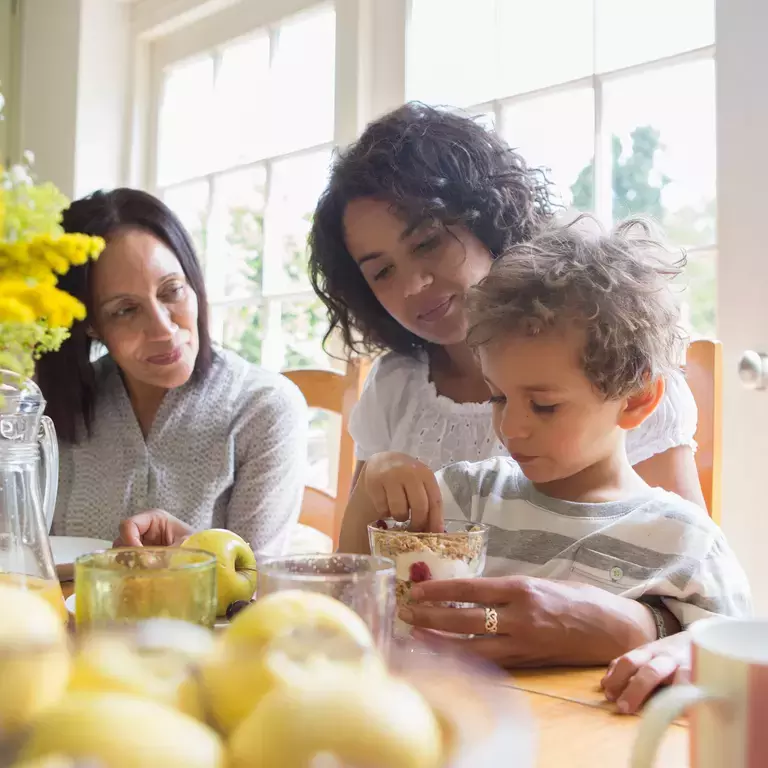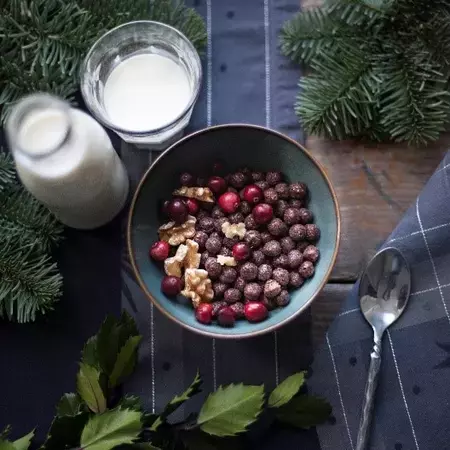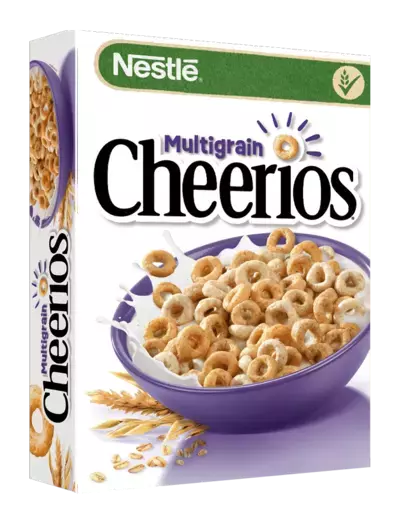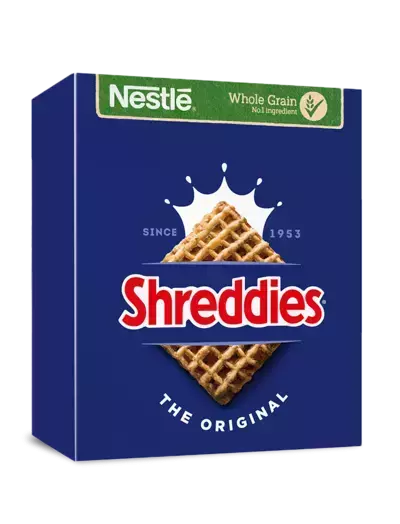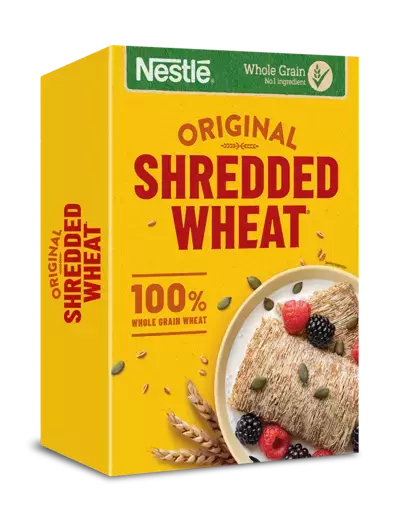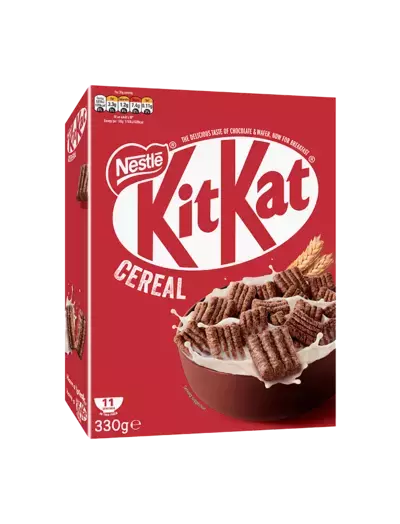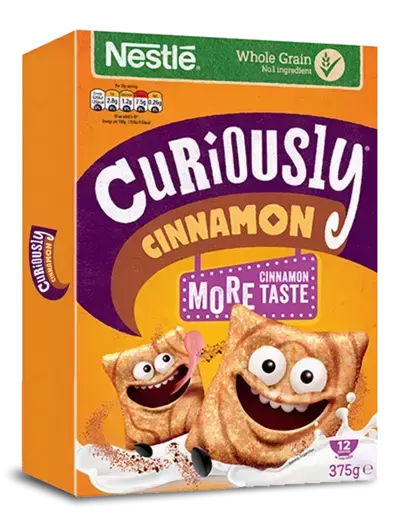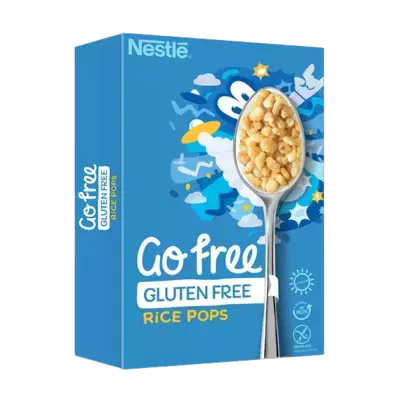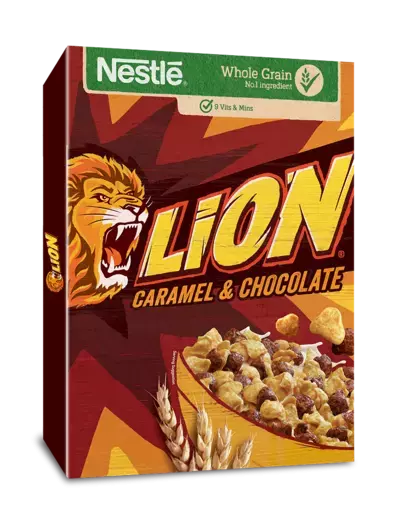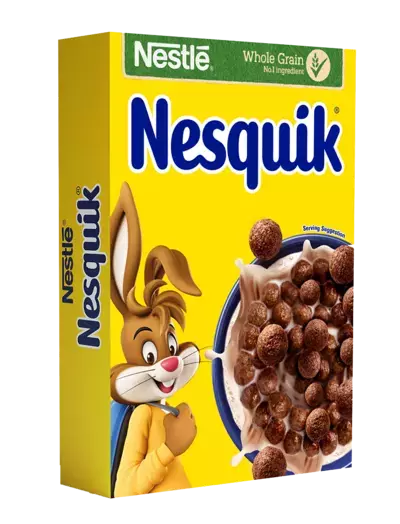At Nestlé Cereals we passionately believe in the importance of whole grains at breakfast time and we’re very proud that all our cereals with the green banner have whole grain as their number one ingredient. Here’s what whole grains really are and what makes them so special among our ingredients and what whole grain cereals you can choose from.
Whole Grain Cereal - What exactly is it?
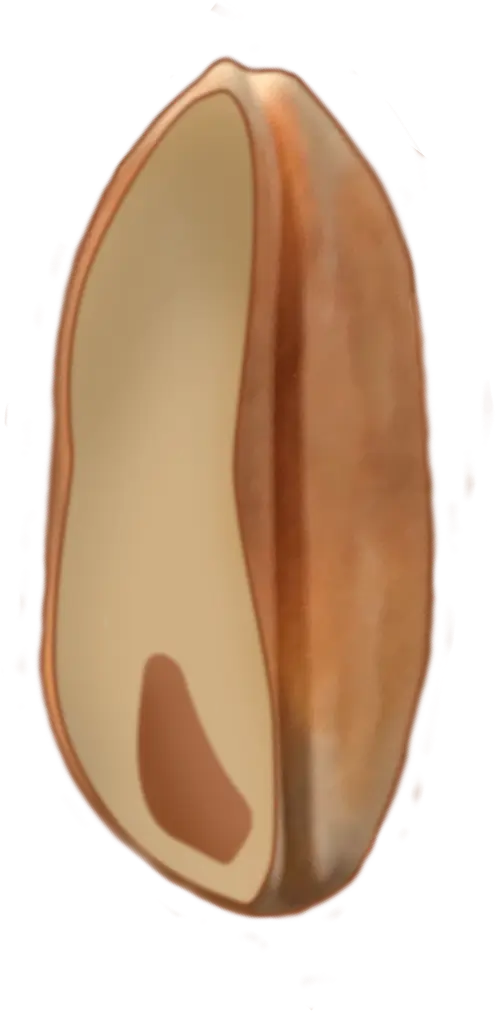






The bran
The starchy centre
The core

What is Whole Grain? (And Where do You Find It?)
Whole grains are complete grains. Unlike refined grains, none of its parts has been taken away (except the inedible parts, such as hull and husk). Whole grains mean you are getting all 3 parts of the grain in the same proportions as they are naturally found - this includes the outer bran, the starchy centre and the core, all bringing a unique combination of nutrients to our whole grain cereals!
Whole grain foods
Grains are everywhere! Drive out into the countryside in summertime, and you’ll see fields of wheat, oats, barley and corn (for rice, which is grown in waterlogged paddy fields, you might have to travel a bit further…)
If your child is curious about how grain is grown, why not have them try for themselves? Follow our guide of how grain is grown and they’ll be little farmers in no time!
But when you’re back in town, staring at the supermarket shelves, how can you tell the whole from the not-so-whole? You may be surprised that some of the foods you’d imagine to be whole grain, actually aren’t.
Whole grain foods list
- Bulgur Wheat
- Whole corn
- Cracked wheat
- Whole oats
- Durum wheat
- Rolled oats
- Buckwheat
- Porridge
- Spelt
- Oatmeal
- Whole barley
- Oat flakes
- Hulled barley
- Brown rice
- Naked barley
- Wild rice
Whole grain can be found in:
- Wholemeal brown bread. Oat flakes
- Whole wheat brown pasta.
- Brown rice.
- Porridge made with whole grain oats.
- Whole grain breakfast cereal.
You'll need to check the label and always look out for the Green Banner.
IMPORTANCE OF WHOLE GRAIN
Whole grain is much more than fibre, it contains carbohydrates, proteins, some lipids and B vitamins, Minerals and antioxidants. You can find at least 8g of whole grain per 30g serving from any of our breakfast cereals with the Nestlé Green Banner!
WE CARE ABOUT WHOLE GRAIN

We’ve made whole grain the number one ingredient in all of our breakfast cereals with the green banner. The bold, bright green banner with the whole grain tick on our cereal packs shows our commitment to making it as easy as possible for you and your family to get tasty whole grain every morning. Wherever you see the green banner, you can be sure the breakfast cereal contains at least 8 grams of whole grain in each 30g serving. Guaranteed!
That’s pretty helpful when you’re rushing round the supermarket and there’s no time to think, let alone read the small print.

Over the last 18 years, our teams have worked hard to improve the nutritional profile of our cereals. We've reformulated our recipes to increase the overall amount of whole grain and consequently fibre while reducing the average amount of sugar and salt. All while keeping the same great taste! Keeping our whole grain breakfast cereals tasty over time is a key priority for our teams.
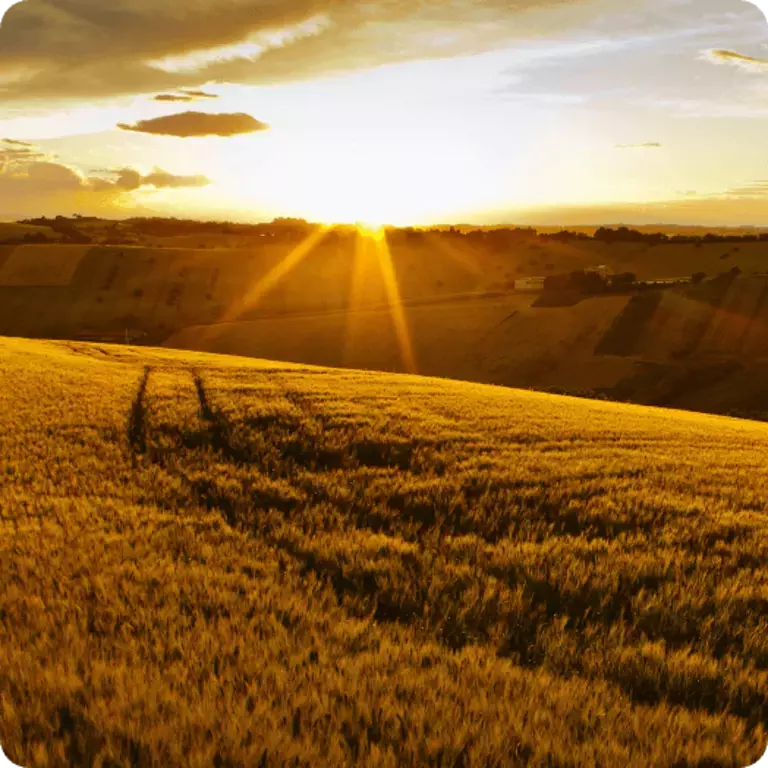
From field to bowl, we take responsibility at each step of the way about how we select ingredients, how we produce the whole grain cereals you love, how we pack them and how they are transported to customers.
• It all starts with sourcing responsibly - ensuring consistent quality for our ingredients
• Setting up buying standards
• Supporting our farmers
• This continues all the way through to our factories by improving packaging sustainability
• Implementing quality and safety standards
• Optimising our logistic chain to reduce our impact on the planet.
• We want to make sure that our cereals taste great and are sourced in the best way possible!
HOW MUCH WHOLE GRAIN DO WE NEED?
Whole grain provides a range of vitamins, minerals, fibre, starch and other nutrients – that’s why it’s often recommended we eat three to five whole grain servings a day. But research shows we’re not getting enough.
When we wanted to know what people around the world think of whole grain, we asked them. We spoke to more than 16,000 people from 11 countries about the importance of whole grain.
8 out of 10 people we spoke to think it's important to eat whole grain. But the same number of people don't know how much whole grain they should eat each day.
Less than half of the people we talked to think they eat enough whole grain. And over a third said people do not know where to find whole grain.
Fortunately, breakfast is a good way to get some whole grain first thing. So we’re always working behind the scenes to make sure our whole grain cereals give you and your family a daily dose of the good stuff.
These foods are not whole grains
- Bran
- Corn meal
- Polenta
- Corn grits
- Pearled barley
- White rice
Our survey found that many people are unsure which foods contain whole grain.
-1 in 10 people think whole grain can be found in bananas.
-14% say whole grain is in white rice.
-Almost 1 in 5 people (17%) believe it’s in white bread.
-21% think it’s in nuts.
None of these foods contain whole grain.
What about refined grains?
When grains are refined to make ‘white’ products, like white bread, and white rice and pasta, the outer parts of the grain removed and only the middle section is used. It’s fine to eat refined foods, they often don't contain as many nutrients as their whole grain sibling.
WHOLE GRAIN CEREAL RECIPES YOU CAN EASILY MAKE AT HOME
Looking for delicious ways to enjoy whole grains and whole grain cereals? Check out our recipes for ideas that will make the whole family fall in love with them.
If you’re in a hurry, these CHEERIOS® WHOLE GRAIN MINI PANCAKES will make your day. But if you’ve got time to wait for a mouth-watering dessert to bake to perfection, then this WHOLE GRAIN CHEERIOS® PEACH CRUMBLE is for you.
Why are Nestlé Cereals committed to providing more whole grain and fibre cereals?
Here at Nestlé Cereals, we are part of a global consortium of public health experts, scientists, consumer groups, manufacturers and government regulators to support International Whole Grain Day every November: raising awareness of whole grain and calling on governments to prioritise it in their national dietary guidelines.
Known as ‘the Whole Grain Initiative’, the consortium unites high-profile organisations including Cereal Partners globally, CEEREAL, Grains & Legumes Nutrition Council, Healthgrain Forum and the Oldways Whole Grains Council in the shared aim of increasing whole grain intake worldwide to contribute to healthier lives.
And at Nestlé Cereals, we are committed to helping you and your family lead healthier lives. Discover more about our breakfast cereal mission. In fact, every Nestlé Cereal with the green banner has whole grain as the number one ingredient which means it contains at least 8 grams of whole grain per serving, helping you to get more fibre and whole grain in your diet.
According to the World Health Organization, we should be eating more whole grain products along with more fruits, vegetables, legumes and nuts.
Based on the wealth of evidence showing that whole grain is an important part of a balanced diet, we have taken significant steps to add more whole grain in our cereals over the last 18 years.
So whole grains are an important part of a varied, balanced diet for your whole family – and they taste great too. Luckily, we can find them in some of our favourite foods, including whole grain breakfast cereals. Go whole grain!
Working to Make Breakfast Better!
Your voice is leading the way to make breakfast better every day and helping us to provide a more nutritious breakfast option.

